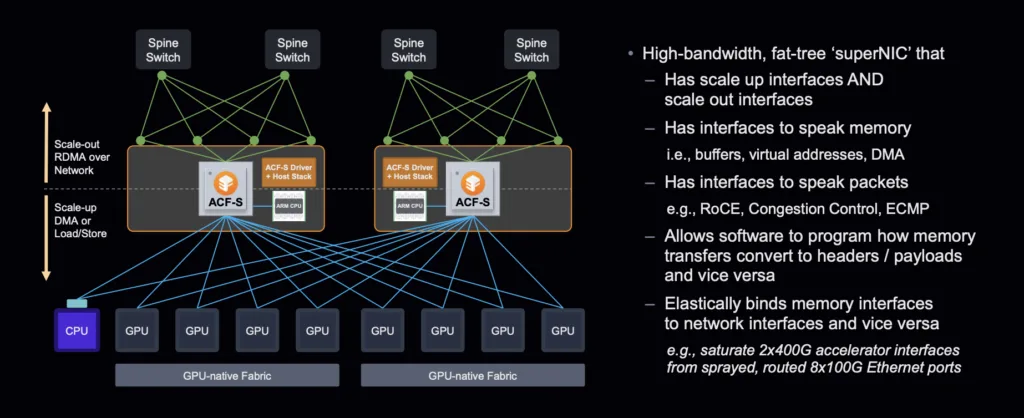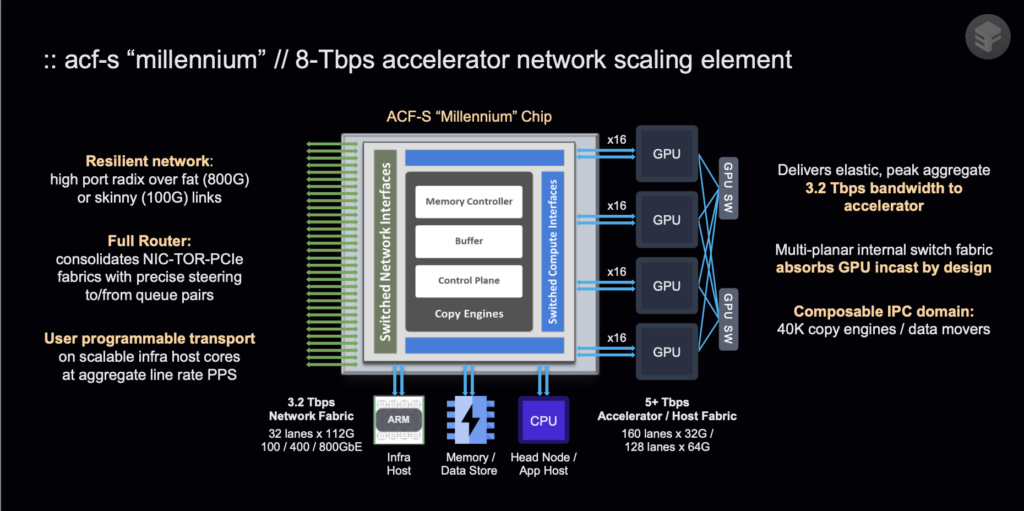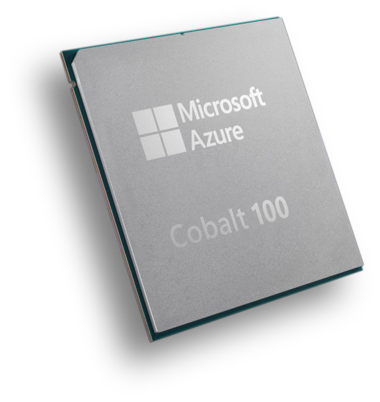First detailed at Hot Chips 2024, Enbrica recently announced that its ACF-S “Millennium” chip, which addresses the limitations of traditional networking hardware for AI and accelerated computing workloads with a unique new architecture, will be available to customers in calendar Q1 2025.
This 8Tbps SuperNIC outpaces current and upcoming standards like 400GbE, 800GbE, and 1.6Tbps networking by integrating features traditionally found in separate PCIe switches, NICs, and memory management systems into a single chip.
ACF-S Millennium
Enfabrica’s ACF-S Millennium is specifically engineered to address the demands of parallel, heterogeneous, and data-intensive compute environments.

Key technical features of Enfabrica’s ACF-S Millennium chip include:
- High Bandwidth:
- The ACF-S supports 3.2Tbps bandwidth per device, aggregating to 8Tbps in multi-device configurations, surpassing traditional networking solutions.
- Integration of Scale-Up and Scale-Out:
- Combines features to support both intra-system (IPC) and inter-system (RPC) communication, optimizing paths for scalable AI and HPC clusters.
- CXL Support:
- Facilitates pooling and sharing of memory resources via CXL interfaces, eliminating the need for host processors in certain configurations.
- I/O and Connectivity:
- 32 lanes of 100GbE feed into a central switching fabric.
- Operates as a many-to-many NIC instead of traditional one-to-one designs.
- Resilient links enable fallback routing, ensuring reliability and reducing latency.
- Advanced Data Handling:
- Crossbars, virtual queues, and multi-banked buffers manage high-speed data movement.
- 5nm fabrication enables dense I/O and efficient energy usage.
- Enhanced memory translation capabilities and packet processing features for flexible operations.
- Scalability:
- Supports up to 1024 GPUs on a single switch layer or 524,288 accelerators in a two-layer switched network.
The ACF-S Millennium chip allows the interconnection of over 500,000 GPUs or accelerators in a low-latency, two-tier network fabric. This addresses critical scalability challenges often found in accelerated compute environments. It also incorporates path redirection and automatic recovery mechanisms to maintain GPU compute efficiency during network disruptions.
The ACF-S Millennium chip and its pilot system, Thames, will be available for customers in Q1 2025.
Analysis
The shift from CPU-centric to GPU-centric architectures in AI data centers drives the demand for advanced networking solutions. Traditional NICs and PCIe switches, optimized for x86 compute environments, fall short in addressing the performance and scalability needs of modern AI workloads. Enfabrica’s ACF-S Millennium chip fills these gaps by offering a tailored solution for AI-driven environments.
Enfabrica’s solution directly challenges established NIC vendors by providing superior performance and flexibility. Its software-defined approach allows data center operators to customize and optimize transport stack control, distinguishing it from traditional fixed-function NICs. The chip’s ability to interconnect large numbers of GPUs and accelerators positions it as a game-changer in the AI data center landscape.
By consolidating functions traditionally handled by multiple devices, the SuperNIC can simplify data center architectures, improve energy efficiency, and reduce costs. With features like CXL memory pooling, the chip could open up new use cases for memory-centric computing environments.
While announcing the upcoming availability of the Millennium, Enfabrica also announced that it recently closed a $115 million Series C funding round, which included investment from Arm, Cisco Investment, and Samsung Catalyst Fund – showing strong confidence in the company from industry leaders. The funds will be used to scale the production of the ACF-S Millennium chip, ensuring it can meet the expected demand for the new chip.
If Enfabrica can deliver on its promises, its new ACF-S Millennium could redefine expectations for NIC performance and scalability and set a high benchmark for future data center interconnect solutions. We’ll be paying close attention to the solution’s real-world performance and adoption.





